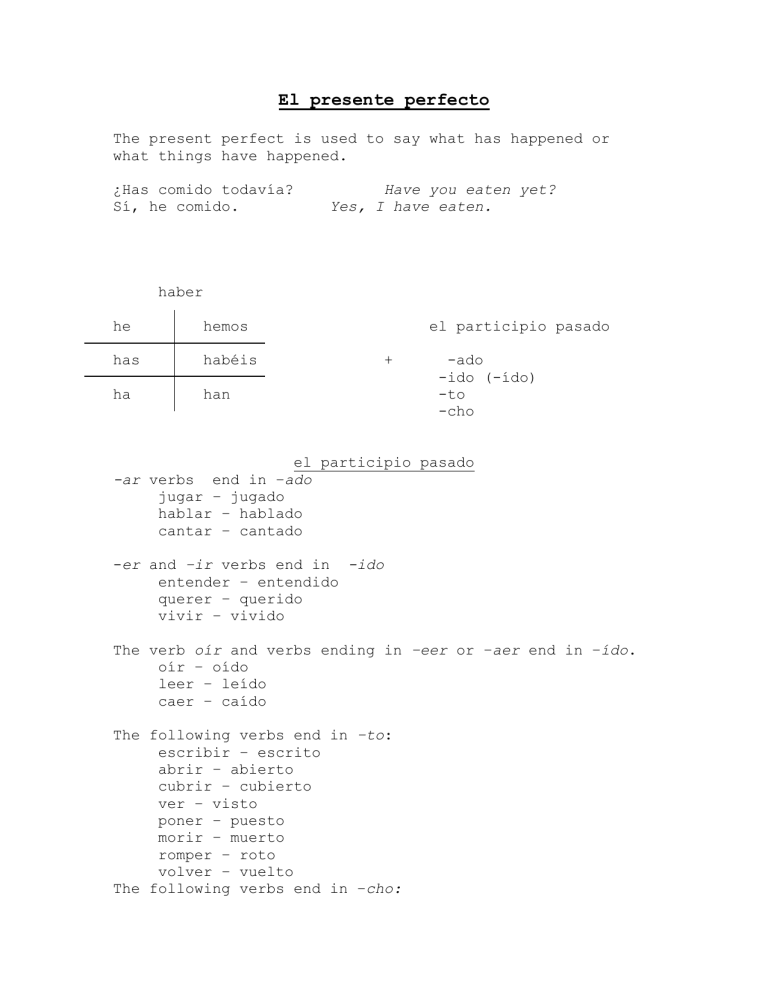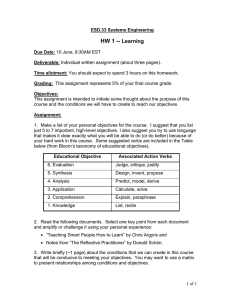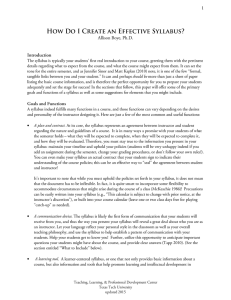
El presente perfecto The present perfect is used to say what has happened or what things have happened. ¿Has comido todavía? Sí, he comido. Have you eaten yet? Yes, I have eaten. haber he hemos has habéis ha han el participio pasado + -ado -ido (-ído) -to -cho el participio pasado -ar verbs end in –ado jugar – jugado hablar – hablado cantar – cantado -er and –ir verbs end in -ido entender – entendido querer – querido vivir – vivido The verb oír and verbs ending in –eer or –aer end in –ído. oír – oído leer – leído caer – caído The following verbs end in –to: escribir – escrito abrir – abierto cubrir – cubierto ver – visto poner – puesto morir – muerto romper – roto volver – vuelto The following verbs end in –cho: decir – dicho hacer – hecho Compound verbs usually follow the same changes: devolver – devuelto componer – compuesto descubrir – descubierto *The verb imprimir (to print) changes to impreso. Me, te, se, le(s), lo(s), la(s), nos, os are placed before the conjugation of haber. Nos hemos divertido. We have had fun. Eduardo no lo ha hecho. Eduardo has not done it. Ellos ya se han lavado las manos. They have already washed their hands.


